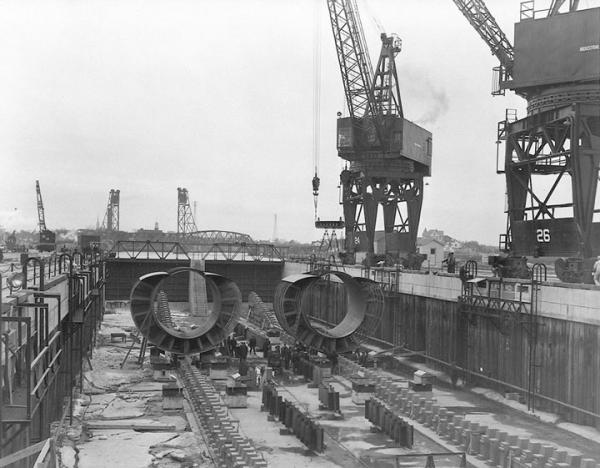Naval History Magazine, January 2013
The shipyard in Portsmouth, New Hampshire, turned out boats at a torrid pace, setting the gold standard for submarine construction during World War II.
On 27 January 1944, the Portsmouth Navy Yard achieved two things no shipyard had ever done—launching three submarines simultaneously and a fourth on the same day. The Ronquil , Redfish , and Razorback lifted off their blocks in Dry Dock #1 at 1300, and a few hours later the Scabbardfish , slid down Building Way #4 into the Piscataqua River. 1 Secretary of the Navy Frank Knox sent a congratulatory message to the yard: “In the launching of four submarines in a single day, the Portsmouth Navy Yard sets another record in the submarine program.” 2 Before 1945 arrived the yard would complete a record-setting 32 submarines. No U.S. shipyard before or since has built so many submarines in a single year. 3

After averaging the completion of less than two submarines a year in the 1930s, the Portsmouth Navy Yard built 79 submarines between 1 July 1940 and 1 July 1945. 4 The average construction time for those boats was much shorter than those of the same class built at other yards. Shipyard employment also reached unprecedented heights during that time. After providing jobs for an average of about 2,000 people annually in the 1930s, in November 1943 employment peaked at 23,465.5
To examine the yard’s wartime success it is necessary to first review events in the interwar years that set the stage for the remarkable wartime production record.




